W. Ellis Arnold III ’79
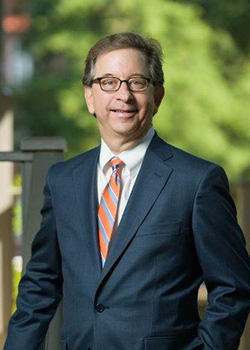
President, 2019-2023
President Emeritus, 2023-
W. Ellis Arnold III was elected the 12th President of Hendrix College by the
Hendrix Board of Trustees in November 2019. A 1979 Hendrix graduate, Arnold
received his Juris Doctor from the University of Arkansas at Little Rock
William H. Bowen School of Law. He practiced law in Little Rock from 1982
until his return to Hendrix in 1990 to serve as Vice President for
Development and College Relations and lead the College’s church relations,
communications, fundraising, and marketing, in addition to serving as
General Counsel. In November 1996, Arnold was named President of Lambuth
University in Jackson, Tennessee. He later served as President and Head of
School of Pulaski Academy in Little Rock, Arkansas, from 2004 until 2008,
when he returned to Hendrix.
Arnold served the College as Acting President on two occasions, in addition
to his role as Senior Executive Vice President, Dean of Advancement, and
General Counsel. Under his leadership, Hendrix announced a 32 percent
tuition reset, developed the Life Launch summer program for high school
students, and successfully completed a $150 million campaign, which
significantly increased the College’s endowment and helped renovate historic
Martin and Veasey Halls. The Hendrix College Board of Trustees bestowed the
honor of President Emeritus upon Arnold effective upon his retirement.
William M. Tsutsui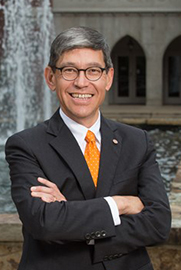
President, 2014-2019
Dr. William M. “Bill” Tsutsui became Hendrix College’s 11th
president in 2014 and served through 2019. Tsutsui stressed creating greater
accessibility and affordability, diversity and inclusion initiatives, a
commitment to the core values of a residential liberal arts education, and
connecting with the College’s United Methodist and Arkansas heritage. His
tenure included two major capital projects: construction of the David and
Mary Ann Dawkins Welcome Center and the Carolyn L. and David B. Miller
Creative Quad.
Read more about President Tsutsui
J. Timothy Cloyd
President, 2001-2013
Dr. J. Timothy Cloyd became the 10th presid
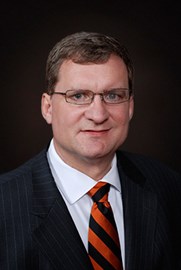 ent of Hendrix College in 2001 and served until 2013. During Dr. Cloyd's
presidency, Hendrix inaugurated
Your Hendrix Odyssey: Engaging in Active Learning, a nationally
recognized engaged learning initiative. Hendrix successfully completed a
$100 million comprehensive campaign to increase student financial
assistance, to endow Odyssey, and to complete capital projects, including
the new Student Life and Technology Center and Wellness and Athletics
Center.
ent of Hendrix College in 2001 and served until 2013. During Dr. Cloyd's
presidency, Hendrix inaugurated
Your Hendrix Odyssey: Engaging in Active Learning, a nationally
recognized engaged learning initiative. Hendrix successfully completed a
$100 million comprehensive campaign to increase student financial
assistance, to endow Odyssey, and to complete capital projects, including
the new Student Life and Technology Center and Wellness and Athletics
Center.
Read more about President Cloyd
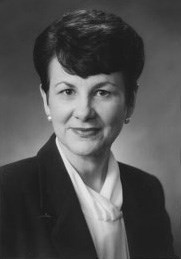
Ann H. Die
President, 1992-2001
As the president of Hendrix College from 1992-2001, Dr. Ann H. Die raised
the national stature of Hendrix through her involvement in numerous national
organizations, including the National Merit Scholarship Corporation, the
Executive Committee of the National Collegiate Athletic Association, the
National Association of Schools and Colleges of the United Methodist Church
and the University Senate of the United Methodist Church. During her tenure,
Hendrix was awarded a Phi Beta Kappa chapter and completed the renovation of
John H. Reynolds Hall, adding Acxiom Hall to become the Charles D. Morgan
Center for Physical Sciences.
Read more about President Die
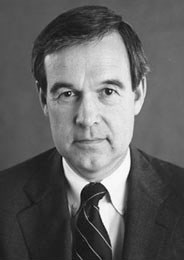
Joe B. Hatcher
President, 1981-1991
The late Dr. Joe B. Hatcher served as President of Hendrix from 1981 until
1991. Hendrix made many great strides during Hatcher's tenure, including the
renovation of Greene Chapel, Martin, Galloway, Couch and Raney Halls, and
Staples Auditorium. Following the 1982 fire that destroyed the College's
administration building, Hatcher led the effort to build Fausett Hall. He
led Hendrix through a successful campaign of nearly $17 million, which
concluded in 1989, and helped launch the campaign to build and endow the
college's current library. During Hatcher's tenure, Hendrix transitioned
from the National Association of Intercollegiate Athletics to the
non-scholarship NCAA Division III. In 1987, the Carnegie Foundation
re-classified Hendrix as a Liberal Arts 1 institution, one of the most
important events during Hatcher's presidency.
Read more about President Hatcher
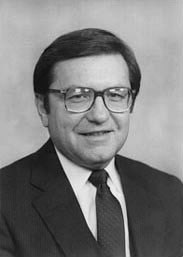
Roy B. Shilling Jr.
President, 1969-1981
Dr. Roy Shilling was the first president since A.C. Millar in 1887 who had
no previous connection with Hendrix. Under his leadership, cultural and
intellectual life expanded with special academic programs such as the
Hendrix-Murphy Foundation Programs in Literature and Language and the
Marshall T. Steel Center for the Study of Religion and Philosophy. Three new
buildings were completed and the market values of both the endowment and the
physical plant increased during Dr. Shilling's tenure. Dr. Shilling resigned
to become president of Southwestern University in Georgetown, Texas, where
he previously served as executive vice president.
Read more about President Shilling
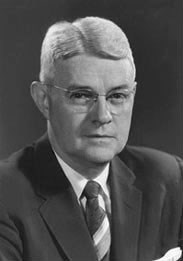
Marshall T. Steel
President, 1958-1969
A 1927 Hendrix graduate and United Methodist minister, Dr. Marshall T. Steel
brought substantial changes to the institution during his tenure. More new
buildings were constructed than at any comparable time, varsity football and
compulsory chapel were discontinued and the rules of dress and conduct were
relaxed. The Marshall T. Steel Center for the Study of Religion and
Philosophy continues his legacy of leadership by promoting the study of
religion and philosophy on the Hendrix campus. Prior to his Hendrix
presidency, Rev. Steel served Highland Park Methodist Church in Dallas,
Texas, for 22 years.
Read more about President Steel
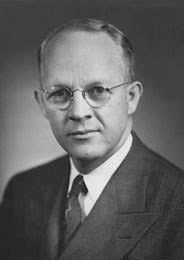
Matt L. Ellis
President, 1945-1958
Under Dr. Ellis, Hendrix experienced a rise in attendance as returning World
War II veterans enrolled in great numbers, added several important buildings
to the campus, launched a revived general education program and established
a closer relationship between Hendrix and the United Methodist Church of
Arkansas. Prior to being named President of Hendrix in 1945, Ellis was
President of Henderson State Teachers College as president, a position he
accepted after being a philosophy professor and library teacher at Hendrix.
Read more about President Ellis
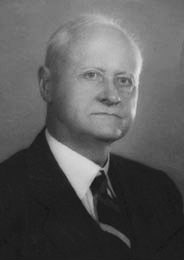
John Hugh Reynolds
President, 1913-1945
An 1893 Hendrix graduate, Reynolds was the first non-clergyman to serve as
President. In 1897, he joined the history and political science department
as a professor before continuing his teaching career at the University of
Arkansas in 1902, where he was head of the history and political science
department. Over the next decade, he developed a reputation as one of the
state's most active scholars. At his retirement after thirty-two years of
leadership, Reynolds left a legacy of new buildings, increased endowment,
outstanding faculty members and graduates.
Read more about President Reynolds
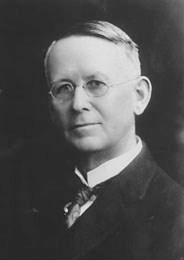
Stonewall Anderson
President, 1902-1910
A 1900 Hendrix graduate, Stonewall Anderson was the first alumnus of Hendrix
to become president of the institution. He believed in the mission of
Christian education and devoted his tenure to the promotion of higher
standards of scholarship. After serving as a tutor for the college in
1890-91, Anderson temporarily abandoned his studies to fill several pulpits
for the Methodist Church, South, in Arkansas. When Anderson returned to
Conway as a pastor, he resumed his college work and received his degree in
1900. He also served as presiding elder of the Church's Clarksville, Fort
Smith and Fayetteville districts. He was serving as a member of the Hendrix
Board of Trustees when he was elected president of the college in 1902.
Read more about President Anderson
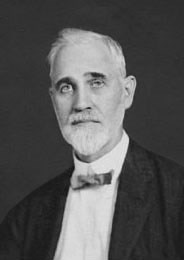
Alexander C. Millar
President, 1887-1902 and 1910-1913
Millar was only 26 when he assumed the presidency of Central Collegiate
Institute. In 1888, Millar made an extensive tour of eastern colleges and
universities in an effort to broaden his conception of the purpose of higher
education by exchanging ideas with professors and presidents. From 1887 to
1890, he reorganized the entire curriculum, increased the faculty, purchased
needed books and equipment and raised the requirements for both admission
and graduation. Millar was also instrumental in the relocation of the
college to its present site in Conway, Arkansas. Under Millar's tenure,
CCI/Hendrix College came to represent the typical American small liberal
arts college.
Read more about President Millar
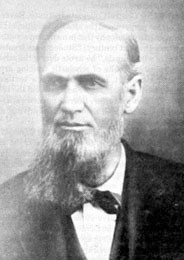
Isham L. Burrow
President, 1876-1887
Shaped by frontier individualism, Burrow set out to build a Christian
institution of higher learning in western Arkansas virtually by himself. He
selected a location 25 miles west of Clarksville and five miles east of
Ozark in the small community of Altus. In 1875, he acquired 320 acres of
land and began to build Central Institute which was the foundation of the
modern day Hendrix College. He served as president of the college until 1887
and continued to be involved with the institution as its financial agent
until 1889.
Read more about President Burrow